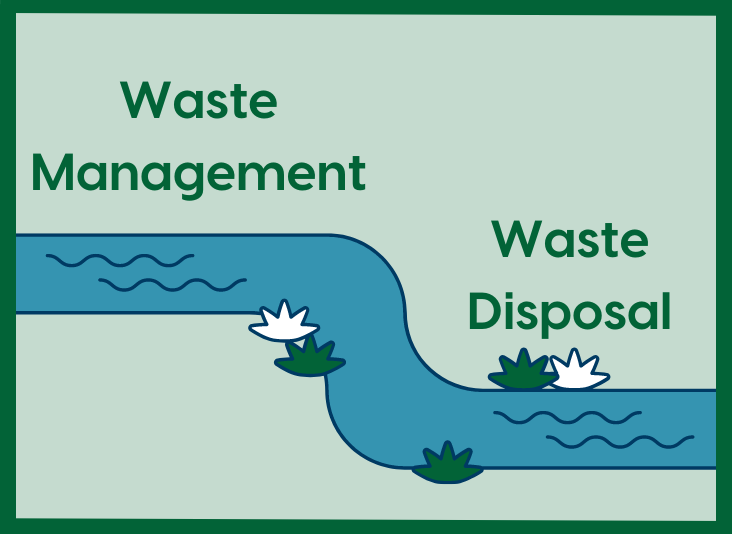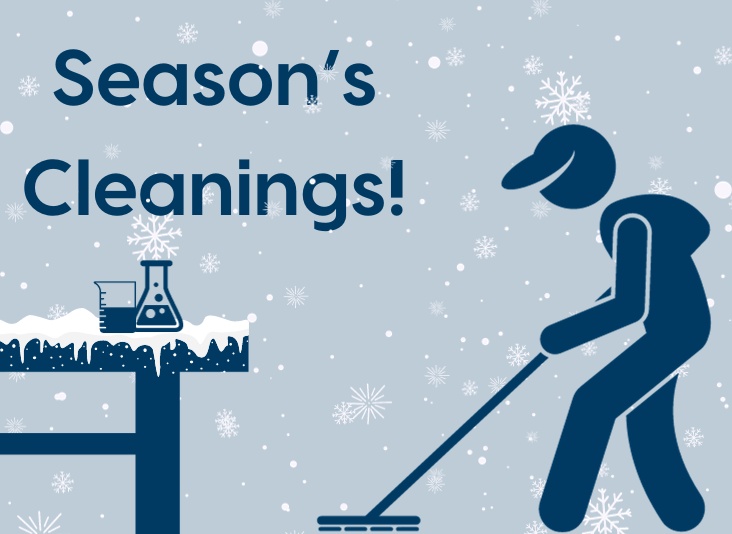Save Money Through Upstream Waste Management
In a world increasingly concerned with sustainability, it’s paramount to make the most eco-friendly choices during both waste creation and disposal. Finding the best waste disposal strategies—including upstream waste improvements—is vital to efficiency, cost-effectiveness, and even improved return on investment (ROI) in environmental, health, and safety (EHS) operations.
The idea of limiting a waste program to only thinking about waste after the point it is generated is often seen as the path of least resistance to many managers. Unfortunately, it is all too common to completely avoid upstream waste management—that is, considering the impact procurement will make before any waste is even created.
The reality is, organizations that don’t consider upstream waste management methods may be costing themselves extra effort, time, and money. Fortunately, there are reasonably straightforward upstream waste management techniques that can deliver quantifiable EHS improvements—and managers who prioritize these may see environmental and financial returns.
Current Waste Management Narrative
Every industry and subsector—from life sciences to healthcare, from heavy industry to pharma and beyond—produces waste. There are very few operations that are completely waste free, but the type and amount of waste produced will vary. In fact, the Environmental Protection Agency (EPA) estimates that the United States alone produces some 7.6 billion tons of industrial waste annually.
To mitigate this, some organizations only focus on reducing their landfill footprint—completely neglecting sustainability implementation before a waste product is ordered or even generated. On the surface, this might feel sufficient—just pick any waste disposal strategy and case closed. All waste disposal options come with their own downsides, however, which can impact the success of the strategy. Landfilling and burning, for example—except for in instances when energy is created as a result, can cause pollution and greenhouse gas emissions.
Even recycling, though it is traditionally considered “more sustainable,” comes with its own set of challenges. This applies especially when recycling hazardous and/or contaminated wastes, or for plastic polymers that are difficult to reuse in an end-of-life product. On top of this, municipal solid waste (MSW) and regulated medical waste (RMW) are often combined within waste streams; in fact, I’ve found that 90% of material deposited into RMW containers is not RMW waste at all, but actually MSW that has been given the RMW title as a “belt and suspenders” type of approach.
Turn to Upstream Waste Management
Most of the ill effects of traditional waste disposal happen in the downstream segment of the management and planning lifecycle. Managers typically don’t consider the end life of a plastic product once that product becomes a waste—and not during operations planning and use. This approach needs to be flipped to instead consider how an object will be sustainably disposed of before it is ever conceived, purchased, or used.
By performing upstream diligence, EHS leadership can better evaluate all potential options—including purchasing reusable or easier-to-recycle products. This approach trims operational fat as only those materials that absolutely must be landfilled or recycled are.
Let’s look at it this way: Poor upstream planning generates waste that you most likely won’t know how to recycle—if in fact it can be recycled at all. This leads to contaminated waste streams that are harder to recycle or dispose of. But if you, when planning your operations, look to reduce waste or create only waste that you know how to effectively recycle, you can get closer to your target of zero-landfill and/or better carbon emissions and prevent costly fees that may be associated with contaminated or comingled waste streams.
Getting Started with Upstream Waste Management
Let’s analyze some tips and best practices to help you get started with upstream waste management.
- Perform an initial review of current waste streams. An exhaustive examination of all waste streams produced by your facility can help you determine where cutbacks can occur or which streams can be reimagined to be disposed of differently. The more data about disposal you uncover, the further you can move upstream in your planning. Ultimately, this can optimize inventory management as well as allow for more informed purchasing and onsite generation practices.
- Utilize community brainstorming and seek outside help if necessary. Tap into knowledge sources both within your workplace—and in the broader surrounding community. Research alternative—and more sustainable—ways of performing tasks. If you’re disposing of a significant amount of glass vials, for example, community brainstorming regarding customer, partner, and public experience with these materials will help you find a better alternative for their use or disposal.
- Create a dedicated and focused management team. A thoughtful and committed waste group can devote its focus on the entire waste lifecycle. Members can review the whole process—from the moment an order is placed to its eventual disposal. A disorganized management team will be unable to reliably study problems and communicate with other departments—and slow down any progress.
- Use small wins as ROI opportunities for the harder challenges. By focusing on individual process components, you can maximize the potential ROI of each of these components by saving money upstream and/or using waste in a new recycled product. Tackling your revenue generation or cost reduction challenges in this way can realign your funds toward your sustainability programs as well.
Interested in learning more about how to think about and implement upstream waste management solutions? Contact us today to learn how we can help.







